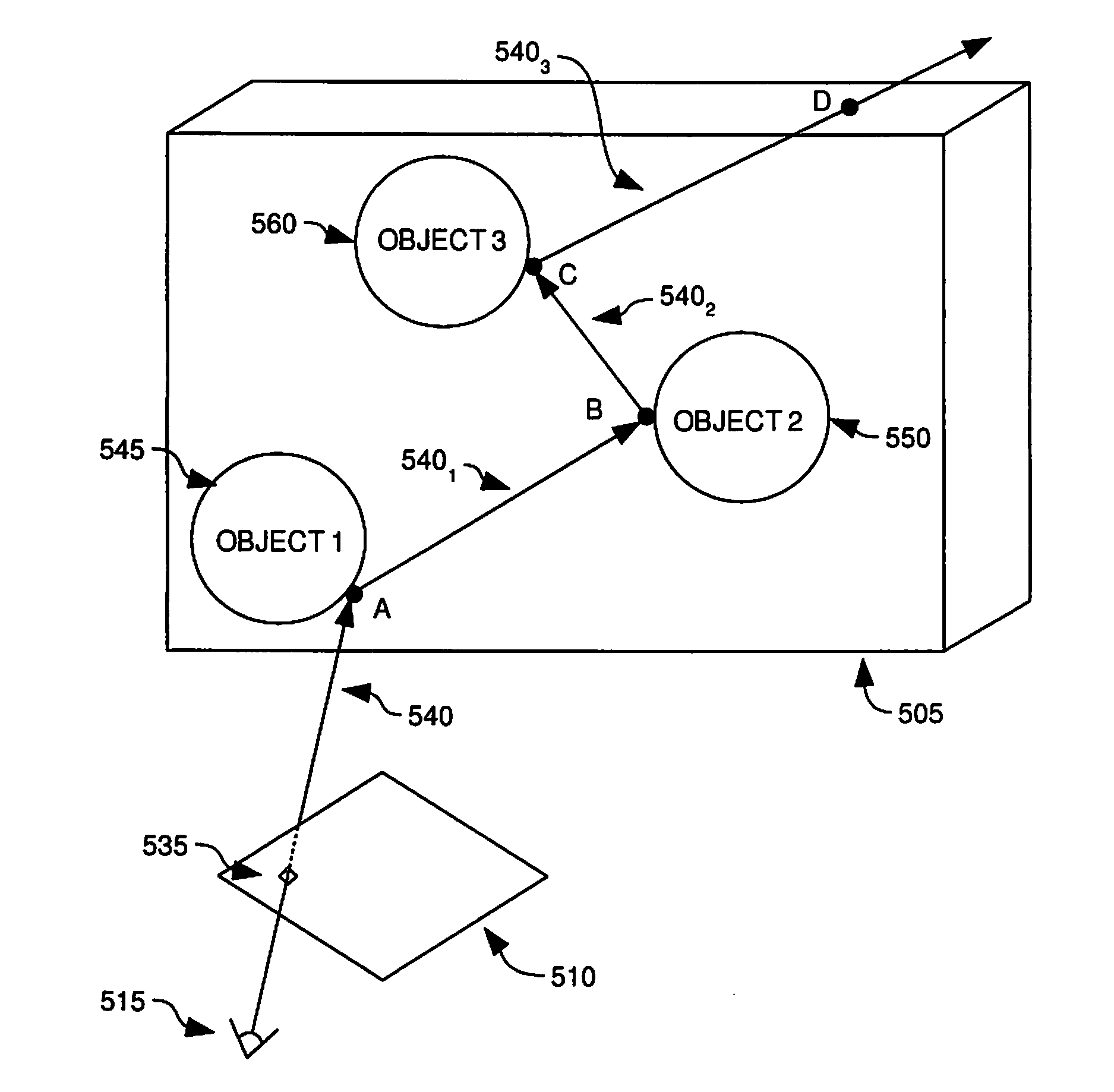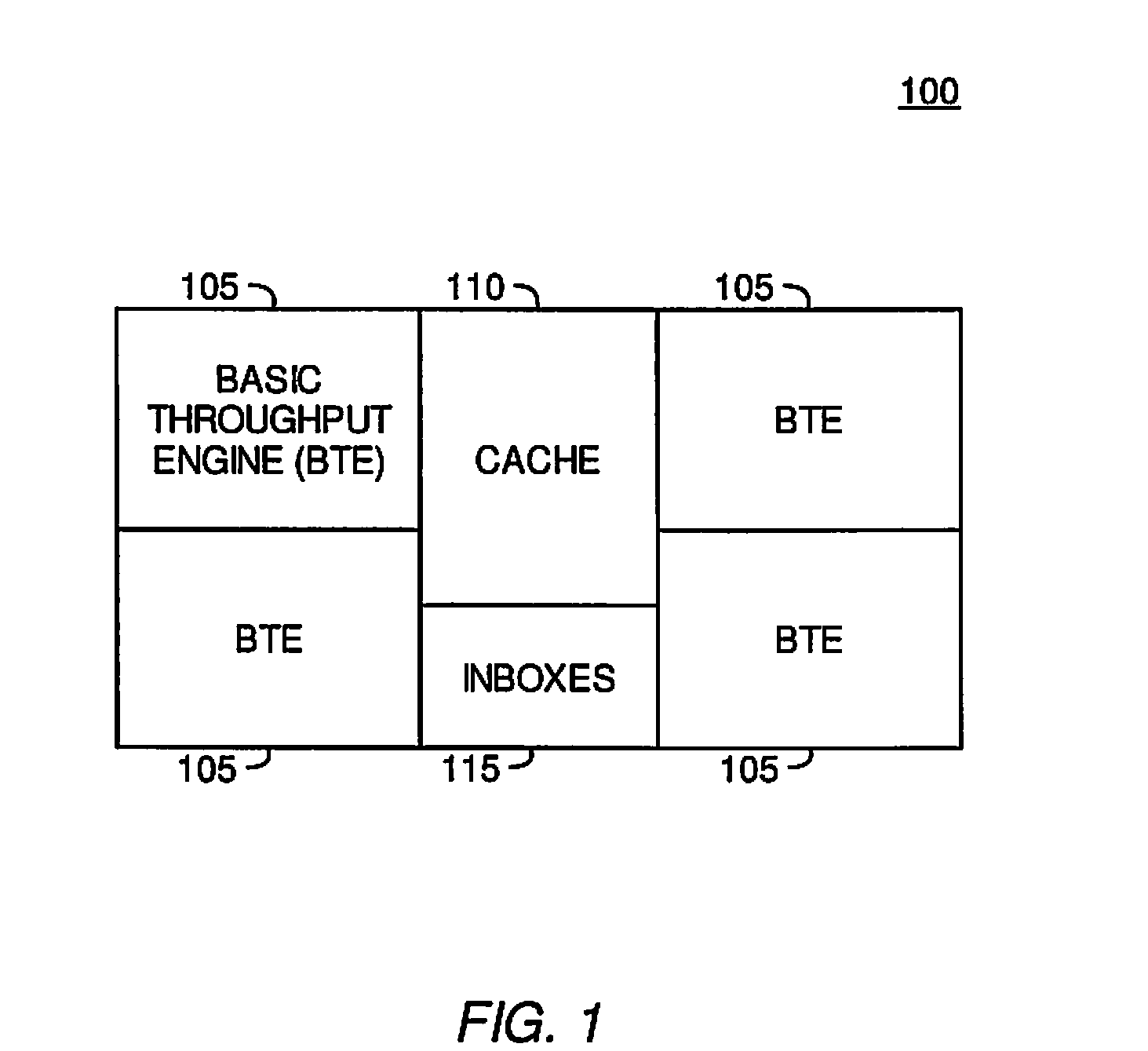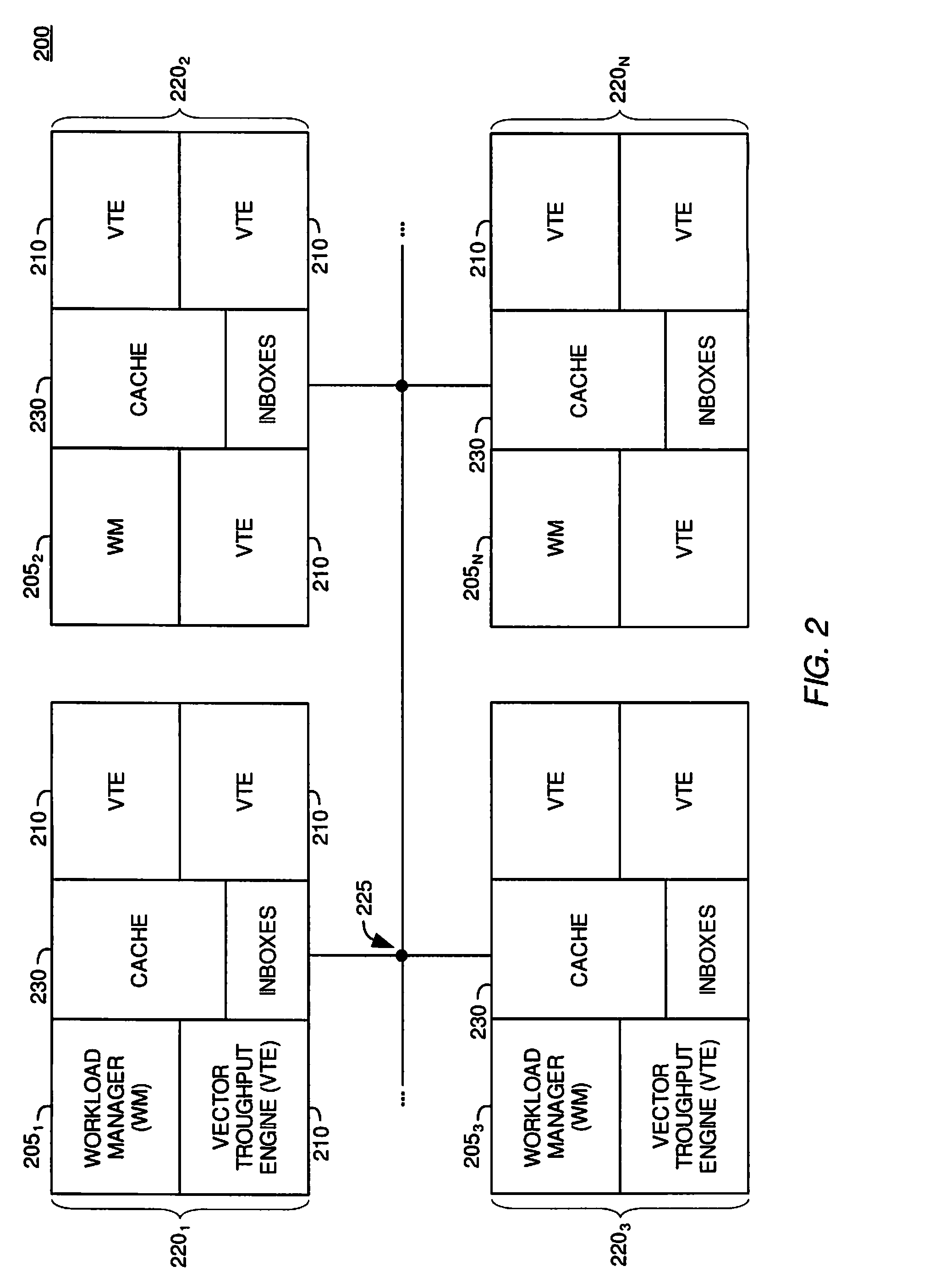Pixel color accumulation in a ray tracing image processing system
a processing system and ray tracing technology, applied in the field of computer processing, can solve the problems of rasterization suffering from some drawbacks, modern monitors display images, and use relatively low amounts of computational power
- Summary
- Abstract
- Description
- Claims
- Application Information
AI Technical Summary
Benefits of technology
Problems solved by technology
Method used
Image
Examples
Embodiment Construction
[0023]Embodiments of the invention provide methods and apparatus for updating the color of a pixel when processing an image using a ray tracing methodology. According to one embodiment of the invention, a scaling factor may be associated with objects intersected by original rays and secondary rays within a three dimensional scene. If an original ray issued by an image processing system and traced through a spatial index by a first processing element intersects an object, the color of the intersected object may be used to update the color of the pixel through which the original ray passed. Furthermore, secondary rays may be spawned from the point the original ray intersected the object to determine if other objects within the three dimensional scene contribute to the color of the pixel through which the original ray passed. According to one embodiment of the invention, information defining the spawned secondary rays may also include a scaling factor associated with the object interse...
PUM
 Login to View More
Login to View More Abstract
Description
Claims
Application Information
 Login to View More
Login to View More - R&D
- Intellectual Property
- Life Sciences
- Materials
- Tech Scout
- Unparalleled Data Quality
- Higher Quality Content
- 60% Fewer Hallucinations
Browse by: Latest US Patents, China's latest patents, Technical Efficacy Thesaurus, Application Domain, Technology Topic, Popular Technical Reports.
© 2025 PatSnap. All rights reserved.Legal|Privacy policy|Modern Slavery Act Transparency Statement|Sitemap|About US| Contact US: help@patsnap.com



